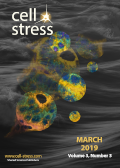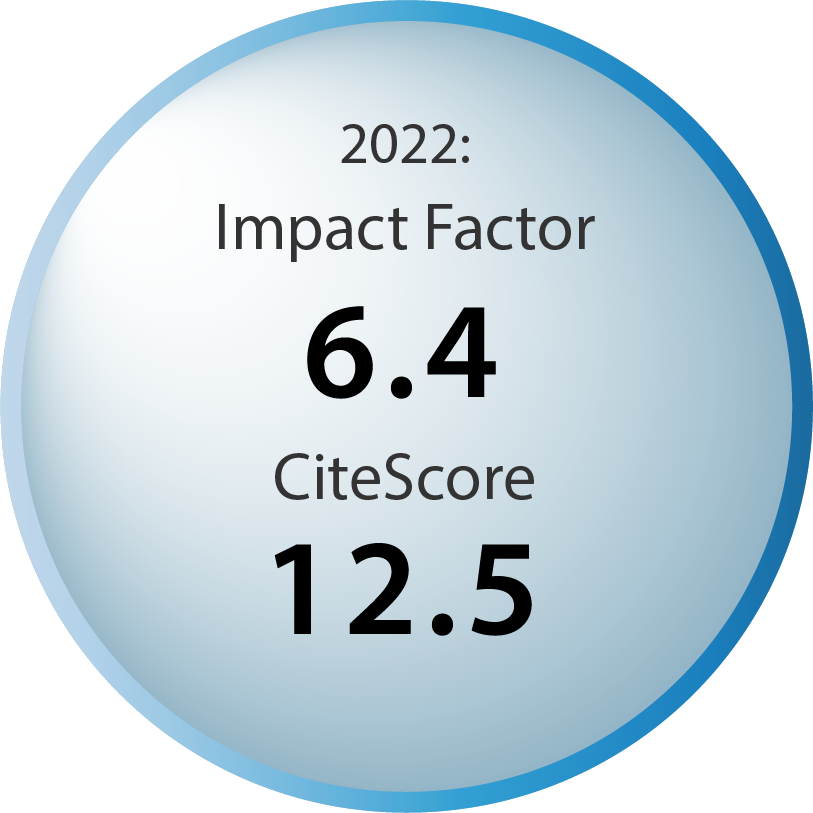Table of contents
Volume 3, Issue 3, pp. 70 - 109, March 2019
Hepatic stress associated with pathologies characterized by disturbed glucose production
Monika Gjorgjieva, Gilles Mithieux and Fabienne Rajas
Reviews |
page 86-99 | 10.15698/cst2019.03.179 | Full text | PDF |
Abstract
The liver is an organ with many facets, including a role in energy production and metabolic balance, detoxification and extraordinary capacity of regeneration. Hepatic glucose production plays a crucial role in the maintenance of normal glucose levels in the organism i.e. between 0.7 to 1.1 g/l. The loss of this function leads to a rare genetic metabolic disease named glycogen storage disease type I (GSDI), characterized by severe hypoglycemia during short fasts. On the contrary, type 2 diabetes is characterized by chronic hyperglycemia, partly due to an overproduction of glucose by the liver. Indeed, diabetes is characterized by increased uptake/production of glucose by hepatocytes, leading to the activation of de novo lipogenesis and the development of a non-alcoholic fatty liver disease. In GSDI, the accumulation of glucose-6 phosphate, which cannot be hydrolyzed into glucose, leads to an increase of glycogen stores and the development of hepatic steatosis. Thus, in these pathologies, hepatocytes are subjected to cellular stress mainly induced by glucotoxicity and lipotoxicity. In this review, we have compared hepatic cellular stress induced in type 2 diabetes and GSDI, especially oxidative stress, autophagy deregulation, and ER-stress. In addition, both GSDI and diabetic patients are prone to the development of hepatocellular adenomas (HCA) that occur on a fatty liver in the absence of cirrhosis. These HCA can further acquire malignant traits and transform into hepatocellular carcinoma. This process of tumorigenesis highlights the importance of an optimal metabolic control in both GSDI and diabetic patients in order to prevent, or at least to restrain, tumorigenic activity during disturbed glucose metabolism pathologies.
Role of protein phosphatases PP1, PP2A, PP4 and Cdc14 in the DNA damage response
Facundo Ramos, María Teresa Villoria, Esmeralda Alonso-Rodríguez and Andrés Clemente-Blanco
Reviews |
page 70-85 | 10.15698/cst2019.03.178 | Full text | PDF |
Abstract
Maintenance of genome integrity is fundamental for cellular physiology. Our hereditary information encoded in the DNA is intrinsically susceptible to suffer variations, mostly due to the constant presence of endogenous and environmental genotoxic stresses. Genomic insults must be repaired to avoid loss or inappropriate transmission of the genetic information, a situation that could lead to the appearance of developmental anomalies and tumorigenesis. To safeguard our genome, cells have evolved a series of mechanisms collectively known as the DNA damage response (DDR). This surveillance system regulates multiple features of the cellular response, including the detection of the lesion, a transient cell cycle arrest and the restoration of the broken DNA molecule. While the role of multiple kinases in the DDR has been well documented over the last years, the intricate roles of protein dephosphorylation have only recently begun to be addressed. In this review, we have compiled recent information about the function of protein phosphatases PP1, PP2A, PP4 and Cdc14 in the DDR, focusing mainly on their capacity to regulate the DNA damage checkpoint and the repair mechanism encompassed in the restoration of a DNA lesion.
The primary cilium protein folliculin is part of the autophagy signaling pathway to regulate epithelial cell size in response to fluid flow
Naïma Zemirli, Asma Boukhalfa, Nicolas Dupont, Joëlle Botti, Patrice Codogno and Etienne Morel
Research Articles |
page 100-109 | 10.15698/cst2019.03.180 | Full text | PDF |
Abstract
Autophagy is a conserved molecular pathway directly involved in the degradation and recycling of intracellular components. Autophagy is associated with a response to stress situations, such as nutrients deficit, chemical toxicity, mechanical stress or microbial host defense. We have recently shown that primary cilium-dependent autophagy is important to control kidney epithelial cell size in response to fluid flow induced shear stress. Here we show that the ciliary protein folliculin (FLCN) actively participates to the signaling cascade leading to the stimulation of fluid flow-dependent autophagy upstream of the cell size regulation in HK2 kidney epithelial cells. The knockdown of FLCN induces a shortening of the primary cilium, inhibits the activation of AMPK and the recruitment of the autophagy protein ATG16L1 at the primary cilium. Altogether, our results suggest that FLCN is essential in the dialog between autophagy and the primary cilium in epithelial cells to integrate shear stress-dependent signaling.



